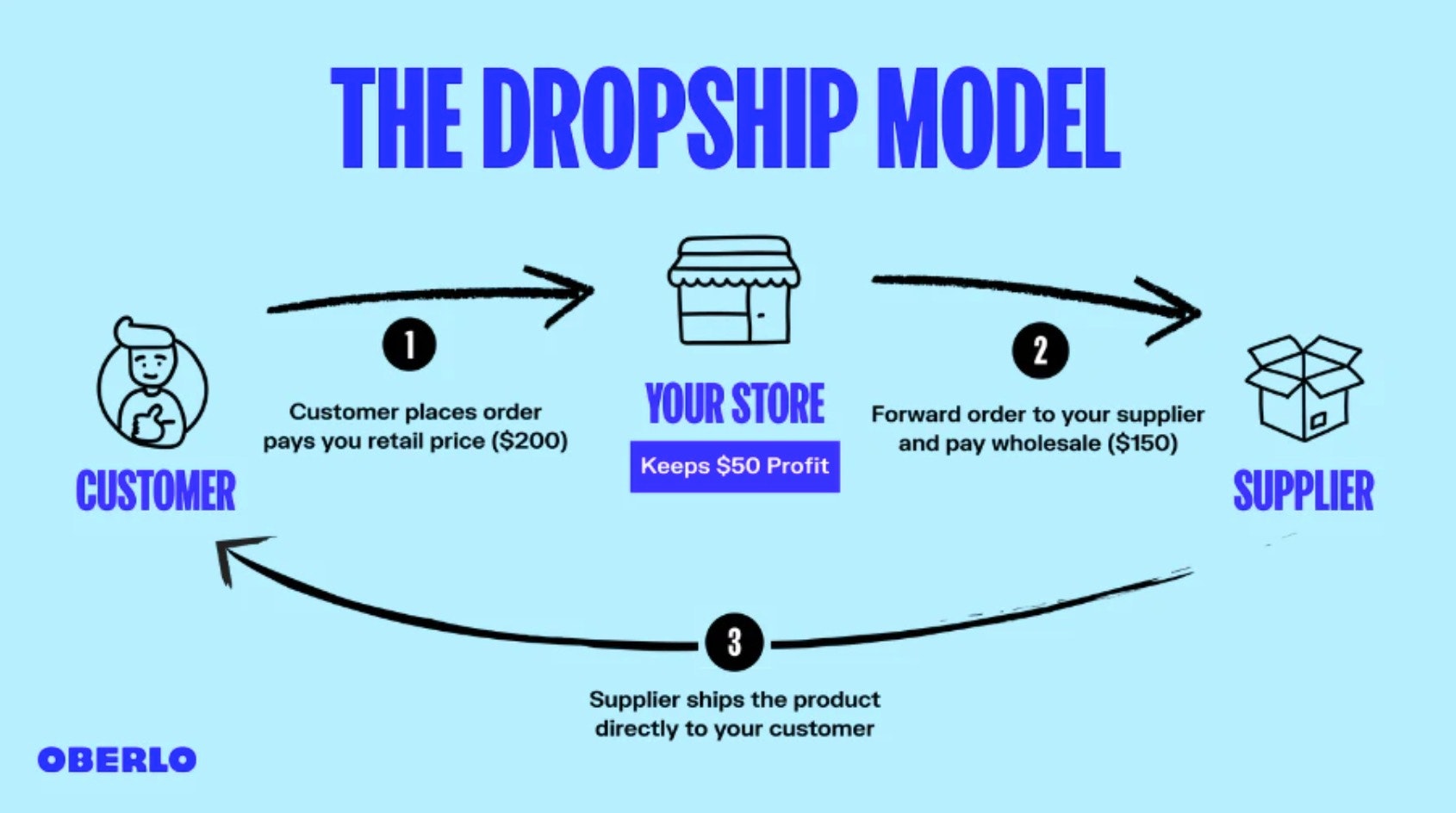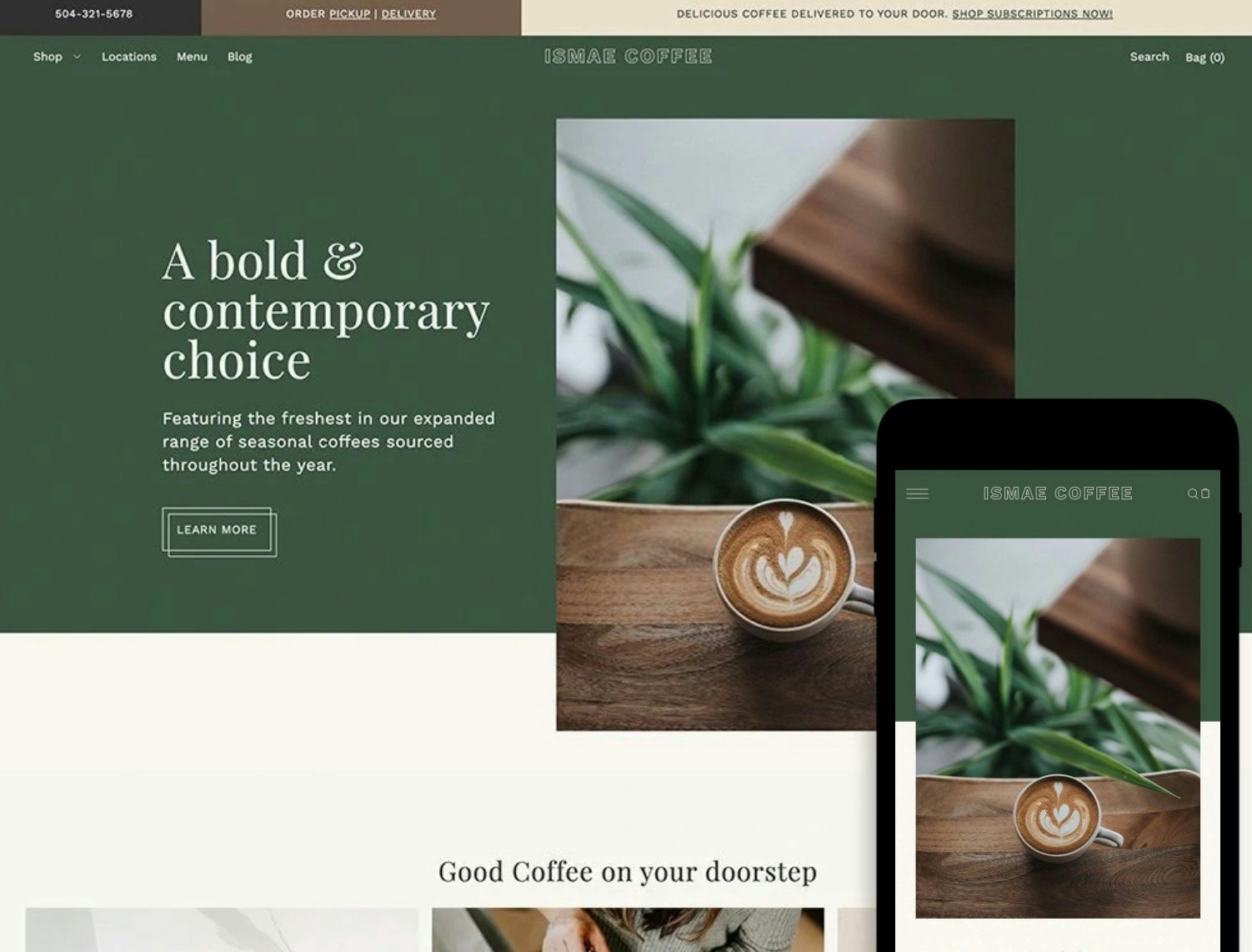Sell Coffee Online: How to Start Your Own Online Coffee Shop
There are two types of people in this world: people who don’t drink coffee, and people who are obsessed with coffee.
OK, maybe that’s too extreme. But chances are, if you’re interested in learning how to sell coffee online, coffee is a big part of your life (or at least you want it to be).
In any event, starting your own online coffee shop can be a great entrepreneurship opportunity. According to the NCA, 62% of Americans drink coffee daily—and they’re making more coffee than ever since the start of the pandemic.
So how can you break into this booming market? Let’s look at how to start your coffee business.
![]()
Start selling online now with Shopify
Start your free trial



Does coffee sell well online?
Coffee is one of the most popular products in the world. No matter where you go, you’ll find people stocking up on their preferred bean or blend. This widespread love for coffee means this market is a competitive one to break into. That said, you can carve out a niche space for yourself by positioning and marketing your brand differently.
A high-commodity product like coffee offers unique benefits to ecommerce store owners, including:
- Plenty of customers.
Coffee is one of the most widely loved drinks globally, meaning there are plenty of customers for you to target.
- Good variety.
You can choose from a variety of coffees to sell online, including flavored instant coffee, luxury ground beans, and experimental blends.
- Small brand appeal.
In many industries, customers assume larger brands will always provide better products and services. However, this isn’t always the case with commodity products like coffee. Customers are more inclined toward branding cues, giving creative small coffee brands an edge.
A widely available product like coffee is also easier to sell. Compared to other goods like electronics, coffee is a modern-day staple with high demand. Your target audience already wants the product—you just have to make them want it from you.

How to start an online coffee business in 6 steps
Selling coffee online can be a rewarding and profitable business. Below, we’ve listed the steps required to start your own online café.
1. Identify your target audience
Successfully selling any product requires an in-depth knowledge of the target audience. As a coffee vendor, you’ll need to consider a few key elements when defining your target customer, including:
Are you B2C or B2B?
Will you be selling coffee directly to end-users or to other businesses like cafés, restaurants, and hospitality companies?
What is your niche?
The easiest way to sell a commodity product like coffee is to focus on selling to a specific niche. With the general coffee space already occupied by larger companies, targeting a subset of consumers with a unique brand is your chance to gain traction in the market.
There are plenty of niche options at your disposal, including:
-
Consumers of the darkest, strongest, most caffeinated coffees
-
People in search of organic, fair-trade coffee
-
Fans of flavored coffee beans
-
People who want high-quality, luxury beans
It’s not always easy to find a suitable niche, but it helps to narrow your audience down into groups and consider what appeals to them. You can use a tool like Keywords Everywhere to get ideas for niches related to coffee and evaluate the different trends, pain points, and angles you could target.
2. Decide what coffee products you’ll sell
Now that you have a target audience and niche, you can begin to build a product portfolio based on your prospect’s unique tastes.
Roasted coffee beans are one of the most obvious things you can sell as a coffee brand, but there are other options too, such as:
-
Coffee-making tools, like a hand-held foam wand for cappuccinos
-
Other hot drinks like teas and hot chocolate
-
Coffee-flavored foods like chocolate or cakes
-
Kitchen utensils like kettles, coffee canisters, and pots
-
Branded coffee mugs and espresso cups

When deciding what products you want to sell, don’t forget to factor in your competitors’ offerings. You want to provide something novel and different while staying current with the latest coffee trends.
3. Choose your business model
You know what you’re going to sell and who you will be selling your products to. Now it’s time to bring your business to life. There are a couple of different business models you can consider as a coffee seller.
Home roasting
Home roasting gives you a lot more control over the end product, but it also requires a lot more work. You’ll need to learn how to roast beans effectively to deliver the right taste. Also, you might need to hire extra staff to help you as your order volumes increase. Moreover, roasting coffee at home means buying special equipment, which can be expensive.
Dropshipping
Working with a dropshipping supplier is a much easier way to get your business up and running. Through dropshipping, you’ll outsource the shipment and storage of your products to a third-party company. You can delegate more of your workload this way, reduce your overhead costs, and easily access a wide variety of products.

The key to success is finding the right supplier. Make sure you consider:
- Product quality.
Request samples
from your vendor to ensure the product quality is up to your standards. You obviously don’t want to work with someone who delivers low-quality beans. Samples will help you identify the supplier who can serve as a long-term partner for your business.
- Customer service.
Your supplier should be able to answer any questions you have about the product. Good, experienced roasters will walk you through the cultivation process and give any information you might require about the beans.
- Pricing.
It’s crucial to find the right balance between affordability and quality. Your supplier needs to be in your price range, but you also need to ensure you’re getting a good quality product so you can impress your customers.
Over time, you’ll grow to build a healthy relationship with your supplier, and your product costs will be lower than if you managed the production alone.
4. Set up your online store
Your online coffee shop is almost ready for launch. Of course, before you can go public you need a website where you can showcase your products and process transactions.
Start by finding a store builder you can trust. Top ecommerce platforms like Shopify offer an easy-to-use store builder, with templates you can customize. Choose a theme that suits your brand image and use Shopify’s theme editor to make other changes.

Once done with the design, you can move on to creating pages for your website. The essential ones include:
- Homepage.
Your homepage is the most important. It’s what visitors interact with first when they land on your site. Make sure your homepage is easy to navigate and the menus, tabs, and buttons are working as they should.
- About Us and Contact pages.
On your About Us page, tell your customers everything they need to know about your coffee business, such as how it started and what makes it unique. Make sure you also have a Contact page available so customers can reach out with their questions.
- FAQ and information pages.
An FAQ answers questions your customers might have about things like shipping times and coffee origins. It’s also worth displaying any approvals or accreditation you have to highlight the safety of your coffee on these pages.
- Blog page.
Share your thoughts on the evolving coffee sector and your business on this page. You can also give updates about upcoming products, such as when they’ll be available on your store.
5. Develop your brand image
With your website ready, you can start developing your brand image.
Branding makes you instantly recognizable in the eyes of your target audience, while drawing attention to the values and features that make your company special. Make sure you have:
- A memorable name.
Naming your coffee store is the first big task you need to complete. Your business name, logo, slogan, and marketing will be impacted by the name you choose for your business. You can use a
business name generator
to brainstorm name ideas, or even run a focus group for feedback.
- An eye-catching logo.
A high-quality logo is a must-have for good branding. Your logo should appear on everything from your coffee packaging to your social media profiles.
Here are some logo makers
you can use to create a professional logo for your business.
- A strong brand personality.
Your brand personality is defined by both your visual branding and your company’s tone of voice. Your choice of colors and shapes can influence customer emotions. For instance, red is mostly associated with power and passion. Similarly, your language in marketing materials and on your website will define you as friendly, sophisticated, innovative, or playful.

6. Promote your coffee business
Once you’ve got your branding, products, and store set up, it’s time to spread the word about your business.
To begin promoting your coffee company, ask yourself where you’re most likely to capture the attention of your target audience. If you’re trying to build an image as a trendy, cutting-edge coffee company that appeals to younger audiences, then you’re likely to see success on TikTok and similar social media channels. If you want to attract customers looking for a luxury coffee experience, you might consider posting photos and videos on Instagram.
A multi-channel marketing strategy will often deliver the best results for most brands, so consider combining:
-
Social media channels like TikTok and Instagram
-
Email marketing to nurture leads into repeat customers
-
Guest blogging and content marketing to attract attention from people on search engines
-
Offline advertising like
pop-up shops
and taster sessions
Be part of the world’s coffee obsession
Coffee is an integral part of so many people’s lives—so it only makes sense that starting your own online coffee shop can be a profitable and fulfilling business idea.
While it may seem overwhelming, doing your research and having a plan is key.
Then, once you’re in motion, you’ll find that you have plenty of flexibility to keep doing what’s working and tweak what isn’t.
Sell coffee online FAQ
What food certifications do I need to sell coffee?
If your inventory consists of unprepared coffee beans or coffee-theme products, you don’t need any food certification to conduct business online.
How to start selling coffee online
Here are the steps required to launch a coffee store:
-
Determine who you are going to sell to.
-
Decide what coffee products you will sell.
-
Roast at home or choose a dropshipping supplier.
-
Create your Shopify store.
-
Develop your coffee brand.
-
Market your business on different platforms.
![]()
Start selling online now with Shopify
Start your free trial


















![Toni Kroos là ai? [ sự thật về tiểu sử đầy đủ Toni Kroos ]](https://evbn.org/wp-content/uploads/New-Project-6635-1671934592.jpg)


